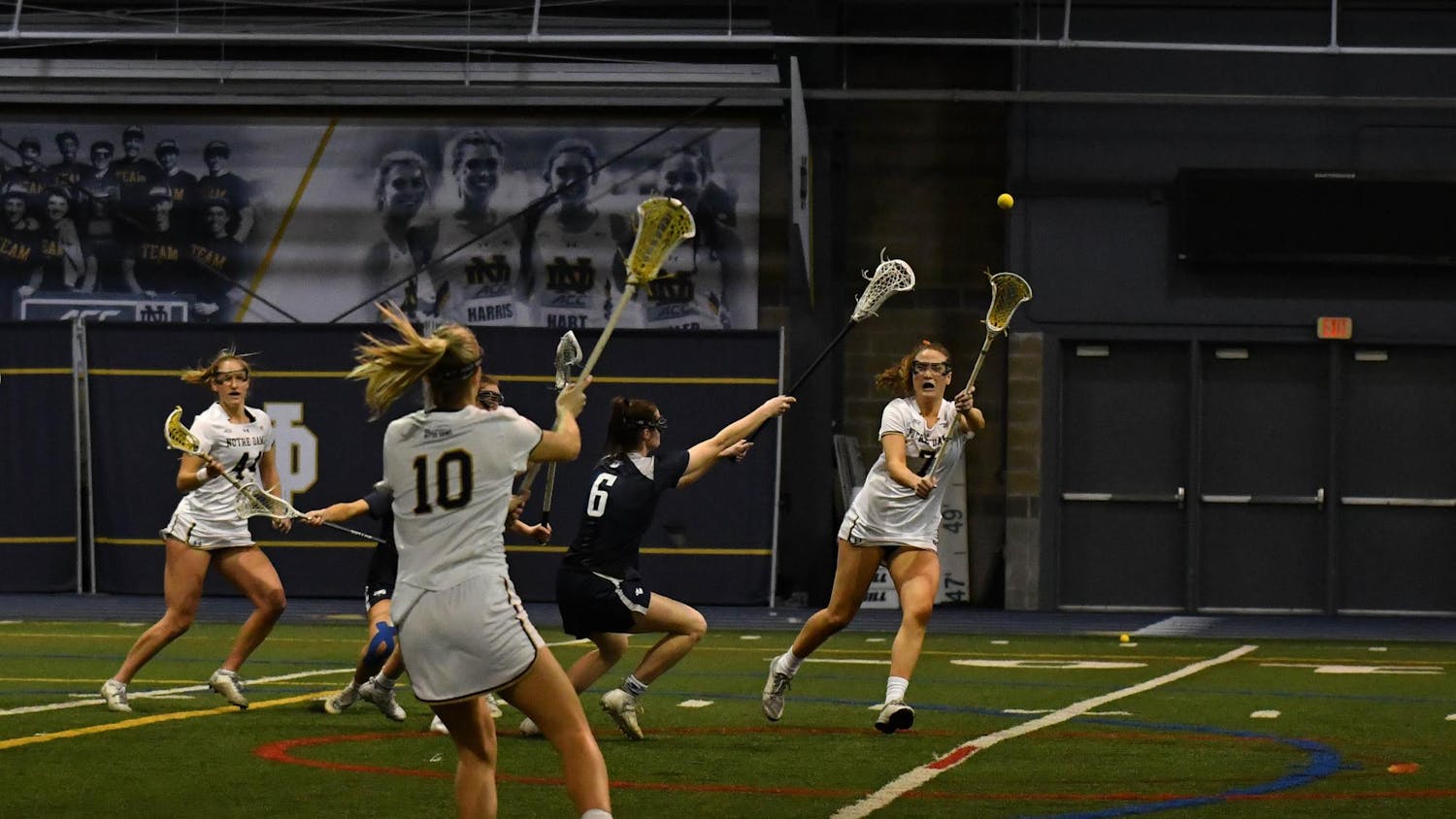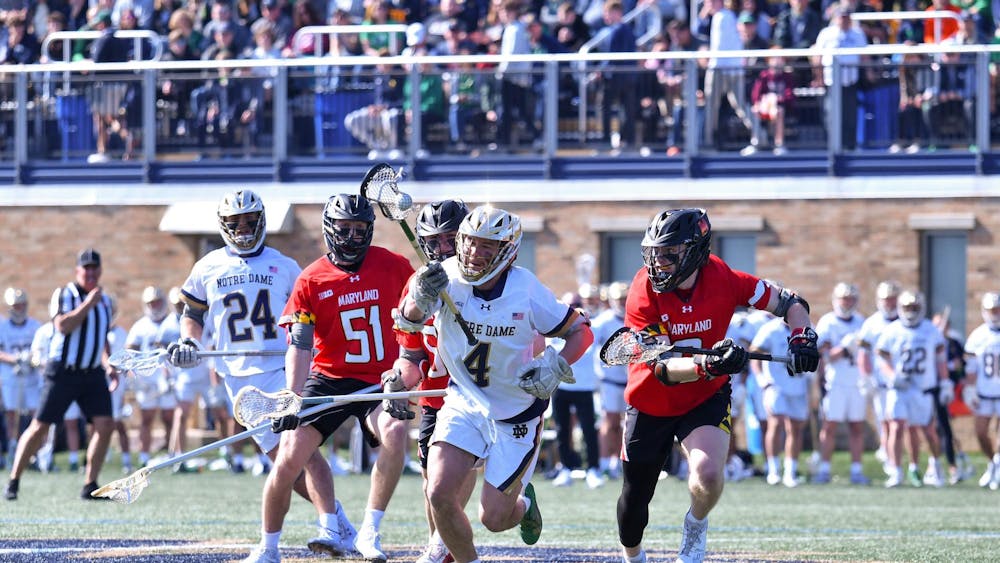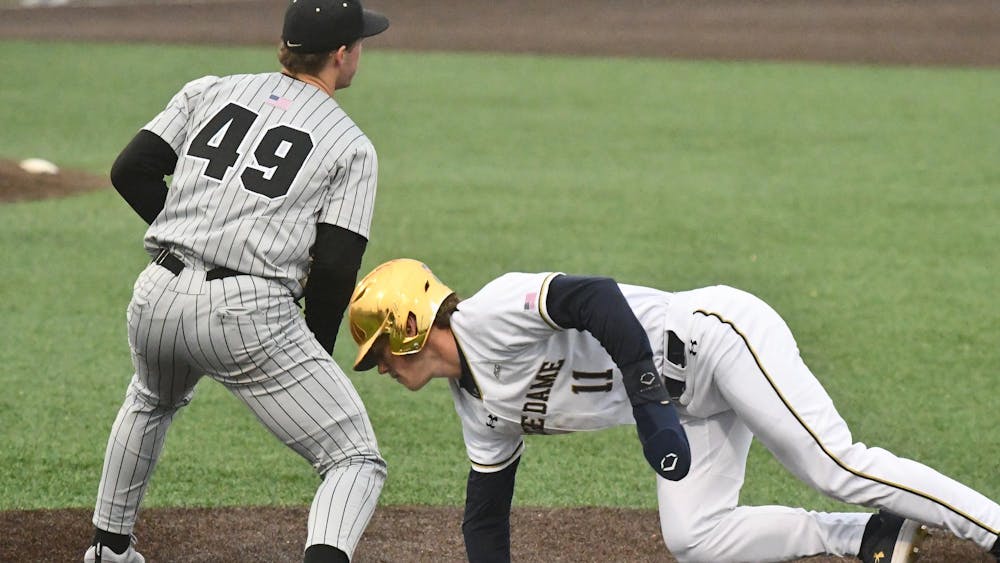With 10:34 remaining in the fourth quarter of Saturday’s matchup between Notre Dame and Northwestern, Irish sophomore receiver Will Fuller snatched an 11-yard touchdown to put his team ahead 40-29.
Irish head coach Brian Kelly elected to go for two points — trying to increase Notre Dame’s lead to 13 rather than 12. The two-point attempt failed, and the Irish lead stayed at 11. Two possessions later, Northwestern marched down the field, scored a touchdown and followed it up with a successful two-point conversion. On its final drive of regulation, the Wildcats tied the game at 40.
The Irish, of course, went on to lose in overtime. Kelly was asked about the decision to go for two at the start of his post-game press conference.
“At that point, it was coin toss of one or two,” he said. “So we decided to go for two.”
Kelly later added that Notre Dame’s “chart” says to go for one in that situation.
“We felt like given the circumstances, our kicking game situation, that we were going to try to extend it with a two-point play,” Kelly said.
Kelly was later asked again about the advantages of going for two in that scenario.
“There’s no advantage in retrospect,” he said. “We felt at the time with the struggles in the kicking game that we would have a good opportunity in the two-point play that we picked, and we felt very confident that we would be successful.”
On Sunday, Kelly said the first component of the decision was simply “chasing the points,” followed by the condition of the kicking game.
“I don’t think the kicking game was the first thing that came into my mind,” Kelly said.
The head coach later said he felt “terrible” about the loss because “obviously we’re all part of it.”
“If we go and kick the extra point, who knows how the game ends, so that’s on me,” Kelly said.
The decision to go for two points is one decision in a game of many, and there are a multitude of variables at play the rest of the way. Notre Dame had an extra point blocked earlier in the game, and sophomore quarterback Malik Zaire was making his debut as the starting holder. When Kelly made the decision to go for two, he’s certainly didn’t expect Irish senior running back Cam McDaniel to fumble with 1:28 remaining in regulation. Still, we’ll go through some of the numbers and probabilities behind the decision:
- Between when Kelly became an FBS head coach in 2004 and the start of the 2014 season, FBS schools across the nation had made 96.1 percent of their extra-point attempts. Entering Saturday’s game, Irish senior kicker Kyle Brindza had drilled 99.1 percent of his extra-point attempts in a Notre Dame uniform.
- Between when Kelly became an FBS head coach in 2004 and the start of the 2014 season, FBS schools across the nation had converted 41.5 percent of their two-point tries.
- Before Saturday, Northwestern had run 120 offensive drives through nine games. Twenty of those possessions (16.67 percent) ended in touchdowns, while another eight (6.67 percent) ended in field goals.
- Throughout the season, Northwestern had scored on 23.33 percent of its drives.
- Very broadly, based on Northwestern’s first nine games, there was a 6.39 percent chance the Wildcats would score two touchdowns if given three offensive possessions.
- Only once this season had Northwestern scored on three consecutive possessions, tallying a touchdown, a field goal and another touchdown in the fourth quarter of its win over Penn State.
- Before Saturday, Northwestern had scored an average of 0.3 points per minute of game time this season. With 10:34 remaining, the Wildcats’ expected point total for the rest of the game was another 3.17 points.
- Based on a win-probability model developed by Matt Mills of SB Nation, Notre Dame’s predicted win probability leading by 11 points in that scenario was 90.8 percent. That probability increases to 92.8 percent when leading by 12 points and to 94.4 percent up 13 points.













